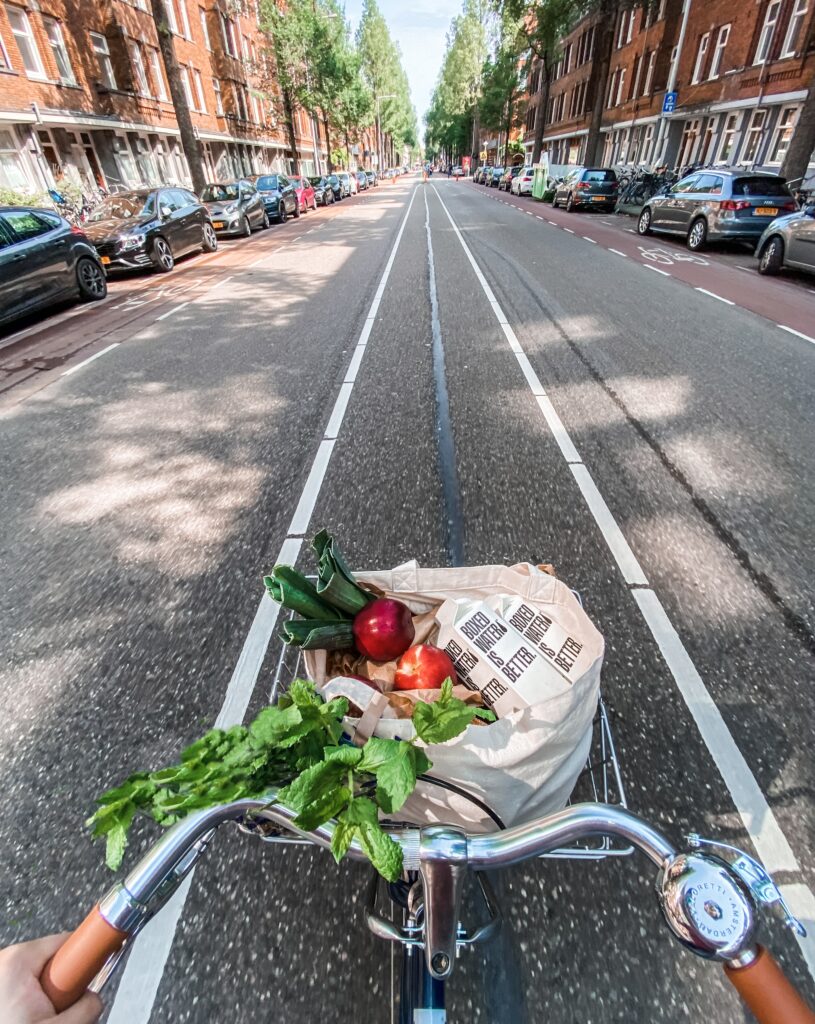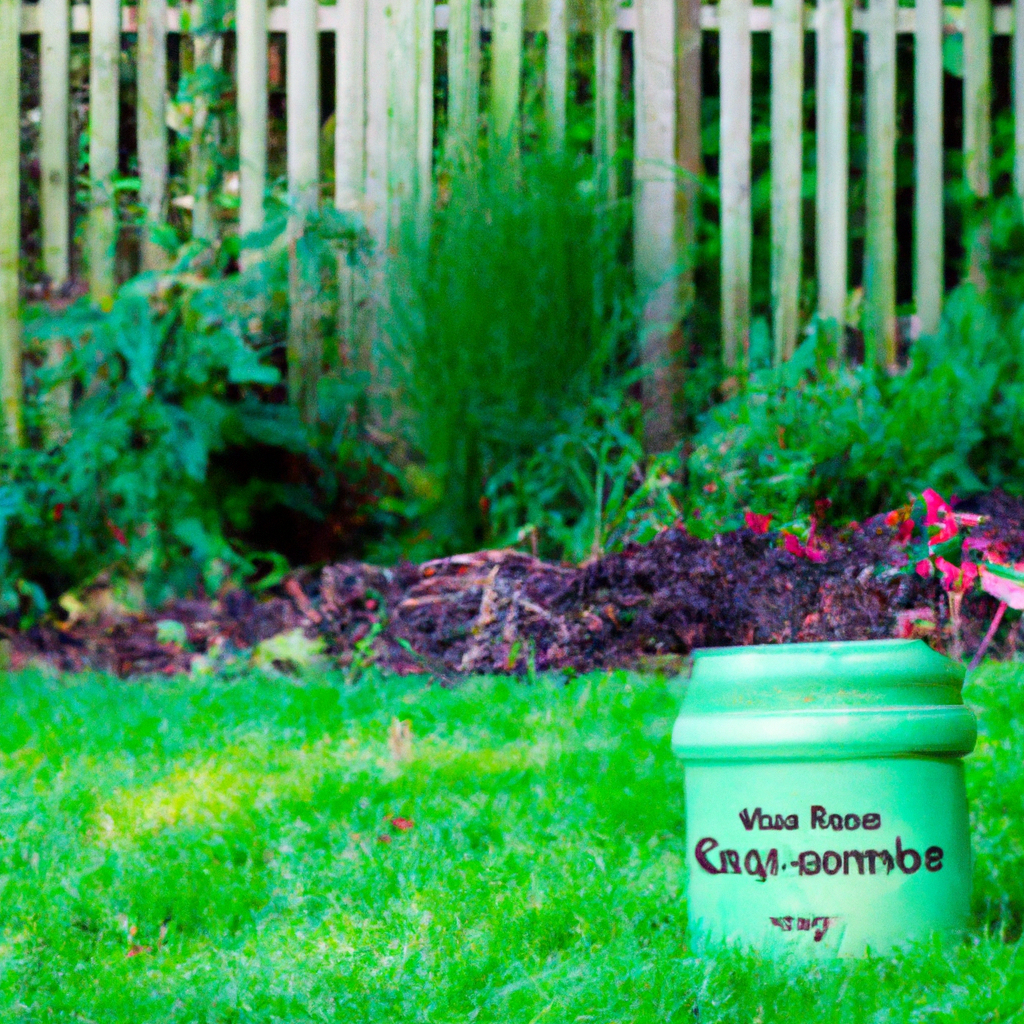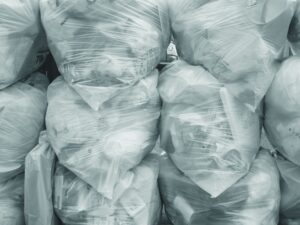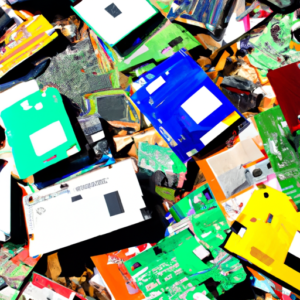So, you’ve finished mowing your lawn and now you’re left with a pile of grass clippings. Ever wondered what to do with them? Well, the answer might just surprise you. In this article, we’ll explore why composting grass clippings can be a beneficial and eco-friendly choice for your garden. Stay tuned to discover the untapped potential of those seemingly insignificant green waste, and how they can contribute to a healthier, more vibrant landscape.

Check Out Our Recommended Composting Products on Amazon Right Here!
Chemical Concerns
Pesticides and Herbicides
When considering composting grass clippings, it is essential to be aware of any chemical concerns that may arise. One major concern is the presence of pesticides and herbicides in the clippings. Throughout the growth and maintenance of your lawn, various chemicals may have been applied to control pests or unwanted weeds. These chemicals can persist in the grass clippings and potentially impact the quality of the compost. It is essential to consider the long-term effects these substances may have on the environment and your health if they are present in the clippings.
Fertilizers
Another chemical concern related to composting grass clippings is the presence of fertilizers. Fertilizers are commonly used to promote healthy lawn growth, providing essential nutrients to the grass. However, if the grass clippings contain a significant amount of fertilizer residue, it can lead to an imbalance of nutrients in the resulting compost. This may negatively impact the plants or vegetables in which the compost is subsequently used. It is crucial to consider the potential effects that excessive fertilizer residue may have on the overall nutrient composition of the compost.
Chemical Residues
Aside from pesticides, herbicides, and fertilizers, there may be other chemical residues present in the grass clippings that could affect the composting process. These residues can come from various sources, such as pet waste, spilled chemicals, or environmental pollutants. It is important to remember that these residues can persist in the compost, potentially impacting its quality and suitability for use.
Effect on Soil Quality
Composting grass clippings may also impact the quality of the soil in which the compost is applied. While composting can enhance soil fertility and structure, the presence of chemicals or imbalances from the grass clippings can hinder these benefits. For example, excessive pesticides or herbicides can harm beneficial soil organisms responsible for nutrient cycling. Additionally, imbalanced nutrient composition resulting from excessive fertilizers can negatively affect the microorganisms and overall health of the soil. It is essential to consider the potential effects on soil quality before deciding to compost grass clippings.
Weed Concerns
Propagation of Weed Seeds
One significant concern when composting grass clippings is the potential spread of weed seeds. If your lawn contains weeds, the clippings from these areas may include seeds that can survive the composting process. When the compost is eventually used, these weed seeds can sprout and contribute to weed growth in the desired planting areas. It is important to carefully manage weed-infested grass clippings and consider alternatives to minimize the spread of weed seeds during composting.
Spreading Invasive Plants
Similar to the propagation of weed seeds, composting grass clippings can also contribute to the spread of invasive plants. Invasive plant species can be detrimental to local ecosystems as they outcompete native vegetation. If your lawn has invasive plant species present, composting their clippings may lead to the dispersal and subsequent growth of these invasive plants elsewhere. It is crucial to be aware of invasive species in your lawn and take appropriate steps to prevent their spread through composting.
Check Out Our Recommended Composting Products on Amazon Right Here!
Nitrogen Imbalance
High Nitrogen Content
Grass clippings are known to have a relatively high nitrogen content. While nitrogen is an essential nutrient for plant growth, an excessive amount can pose challenges during the composting process. The abundance of nitrogen in grass clippings can lead to an imbalance in the compost, resulting in a high carbon-to-nitrogen ratio.
Carbon-to-Nitrogen Ratio
An imbalanced carbon-to-nitrogen ratio can hinder the breakdown of organic matter in the compost pile. Ideally, a compost pile should have a ratio of approximately 25-30 parts carbon to 1 part nitrogen for optimal decomposition. However, grass clippings alone can have a ratio as low as 12:1, which can lead to slow decomposition and a lack of microbial activity. It is vital to be mindful of the nitrogen content in grass clippings and take necessary steps to balance the carbon-to-nitrogen ratio in the compost pile.
Effects on Compost Quality
The imbalanced nitrogen content and carbon-to-nitrogen ratio in grass clippings can impact the overall quality of the compost. Slow decomposition due to excessive nitrogen levels can lead to a longer composting process and potentially result in a less fertile compost. Additionally, the imbalanced nutrient composition can limit the availability and balance of essential nutrients for plants when the compost is used in gardens or potted plants. It is crucial to carefully manage the nitrogen content and carbon-to-nitrogen ratio when composting grass clippings to ensure the production of high-quality compost.
Pest Attraction
Increased Pest Activity
Composting grass clippings can attract pests, such as flies, ants, or rodents, to your compost pile. These pests are attracted to the organic matter and moisture found in the grass clippings, and their presence can lead to an increased risk of infestation. The pests may disrupt the composting process or cause other issues in your garden or surrounding areas.
Risk of Infestation
In addition to attracting pests to your compost pile, composting grass clippings can also increase the risk of pest infestations in your garden or lawn. If the compost contains eggs, larvae, or adult pests, they can potentially spread into the areas where the compost is used. This can result in damage to plants, increased pest populations, and additional challenges in pest control. It is crucial to consider the potential risks of attracting and spreading pests before composting grass clippings.

Odor Issues
Grass Fermentation
One common issue associated with composting grass clippings is the potential for grass fermentation, leading to offensive odors. When grass clippings are densely packed or heavily watered, they can undergo anaerobic fermentation instead of aerobic decomposition. This fermentation process produces foul-smelling gases, including ammonia and other sulfur compounds. These odors can become overwhelming and unpleasant, making it challenging to enjoy your outdoor space.
Ammonia Release
Grass clippings, especially when freshly cut, can release significant amounts of ammonia during composting. Ammonia is a strong-smelling gas that can cause irritation and discomfort when inhaled. High levels of ammonia can also harm beneficial soil organisms or nearby plants. It is important to be mindful of ammonia release when considering composting grass clippings, especially in areas where it may affect human health or neighboring environments.
Offensive Smells
The combination of grass fermentation and ammonia release can result in offensive smells emanating from the compost pile. These odors can be a nuisance not only for you but also for your neighbors. Offensive smells can reduce your enjoyment of outdoor spaces and potentially disturb others in the vicinity. It is crucial to consider the potential for unpleasant odors when composting grass clippings and take steps to minimize or mitigate the smell, such as proper aeration and moisture control.
Grass Matting
Compaction and Airflow
Grass clippings have a tendency to mat or clump together, leading to compaction and limited airflow within the compost pile. Matting can create dense layers that inhibit the exchange of oxygen necessary for aerobic decomposition. Without proper airflow, decomposition slows down, and the composting process may become inefficient. It is important to address grass matting and ensure adequate airflow in the compost pile for optimal decomposition.
Slow Decomposition
Due to the tendency to mat, grass clippings can take longer to decompose compared to other types of compostable materials. The dense layers formed by grass matting can hinder the access of microorganisms and decomposers to break down the organic matter effectively. Slow decomposition delays the production of usable compost and can lead to a backlog of grass clippings waiting to decompose. It is essential to consider the potential for slow decomposition when composting grass clippings and plan accordingly to manage this challenge.
Limiting Compost Aeration
Grass matting not only restricts airflow but also limits the accessibility of composting organisms to the organic matter. With limited aeration, beneficial bacteria and fungi responsible for decomposition may struggle to reach the inner layers of the compost pile efficiently. This can result in incomplete decomposition and a less nutrient-rich compost. It is important to consider the limitations of compost aeration when composting grass clippings and implement strategies to promote adequate airflow and microbial activity.

Lawn Diseases
Fungal Diseases
Grass clippings can potentially harbor fungal diseases that may persist in the composting process. Fungal diseases, such as brown patch or dollar spot, can affect the health and appearance of your lawn. If the clippings from an infected lawn are composted, there is a risk that the fungal spores survive and infect other plants when the compost is used. It is crucial to be mindful of any existing fungal diseases in your lawn before composting grass clippings.
Pathogen Contamination
In addition to fungal diseases, grass clippings may also contain other plant pathogens, such as bacteria or viruses. These pathogens can survive in the compost pile and potentially infect plants when the compost is applied to gardens or landscapes. Contamination from pathogens can spread quickly and lead to substantial damage to your plants. It is essential to consider the risk of pathogen contamination when composting grass clippings and take necessary precautions, such as proper temperature management, to mitigate this risk.
Spreading Pathogens
Composting grass clippings that contain pathogens opens the possibility of spreading those pathogens to other areas. If the compost is used in different locations or transported, the pathogens can be inadvertently introduced to new environments. This can result in the expansion of disease outbreaks and the contamination of previously healthy plants or ecosystems. It is crucial to be cautious about spreading pathogens through composting grass clippings and take appropriate measures to prevent their dispersal.
Composting Challenges
Moisture Control
Composting grass clippings requires careful management of moisture levels. Grass clippings have a high moisture content, and if not properly balanced with other compost materials, can lead to an overly wet compost pile. Excessive moisture can cause anaerobic conditions, foul odors, and slow decomposition. On the other hand, inadequate moisture can hinder the decomposition process and lead to a dry and inactive compost pile. It is essential to monitor and control moisture levels when composting grass clippings for optimal composting results.
Heat Generation
Effective composting relies on the generation of sufficient heat within the compost pile. Heat is crucial to accelerate decomposition, eliminate weed seeds and pathogens, and produce a stable compost. However, grass clippings alone may not produce enough heat to sustain the composting process. The high nitrogen content and moisture content in grass clippings can contribute to excessive heat buildup and a smelly, anaerobic environment. It may be challenging to achieve the ideal temperature range for efficient composting using grass clippings alone. Additional materials with appropriate carbon-to-nitrogen ratios may be necessary to achieve optimal heat generation.
Turning and Mixing
Another challenge of composting grass clippings is the need for regular turning and mixing. Grass clippings tend to mat and clump together, as mentioned earlier. This matting can make it difficult to uniformly incorporate air and other compost materials into the pile. Without proper turning and mixing, the composting process may become stagnant, resulting in slow decomposition and an inadequate breakdown of organic matter. It is crucial to dedicate time and effort to properly turn and mix the compost pile when utilizing grass clippings as compostable material.

Alternative Uses
Mulching
Instead of composting grass clippings, one alternative use for these clippings is to utilize them as mulch for your lawn or garden. Grass clippings can serve as a protective layer on top of the soil, conserving moisture, suppressing weed growth, and gradually adding nutrients back to the ground. Mulching with grass clippings can help maintain a healthier lawn or garden and reduce the need for additional fertilizers or other amendments.
Leaving Clippings on the Lawn
Another simple alternative to composting grass clippings is to leave them on the lawn. Known as “grasscycling,” this practice involves mowing the lawn without collecting the clippings, allowing them to fall and decompose naturally. Grass clippings left on the lawn can act as a natural fertilizer, returning nutrients to the soil as they break down. This practice reduces the amount of waste generated and promotes a healthier lawn, eliminating the need for composting altogether.
Grasscycling Programs
Some communities have implemented grasscycling programs to encourage the beneficial use of grass clippings. These programs provide education and resources to homeowners on the benefits of grasscycling and how to properly manage the clippings on their lawns. Grasscycling programs often include tips on mowing practices and offer alternatives to composting, ensuring that grass clippings are put to good use and contribute positively to the environment and the health of the community.
Environmental Impact
Transportation and Energy Usage
Composting grass clippings may have environmental implications, particularly in terms of transportation and energy usage. If you choose to have your grass clippings collected for off-site composting, it requires additional transportation and resources to transport them to a composting facility. This transportation adds to carbon emissions, contributing to climate change and air pollution. It is crucial to evaluate the environmental impact of transporting grass clippings and consider local alternatives to minimize the carbon footprint associated with composting.
Landfill Space Reduction
Composting grass clippings instead of sending them to landfills can help reduce the strain on limited landfill space. Grass clippings contribute to the volume of organic waste in landfills, where they often generate methane, a potent greenhouse gas. By diverting grass clippings from landfills and incorporating them into the composting process, we can minimize the amount of organic waste in landfills and reduce the environmental impact associated with waste management.
In conclusion, composting grass clippings poses various challenges and considerations that need to be addressed. From chemical concerns to weed propagation and nitrogen imbalances, composting grass clippings may not always be the ideal solution for everyone. It is important to carefully evaluate the potential risks and benefits of composting grass clippings in your specific situation. Exploring alternative uses like mulching or grasscycling programs can provide environmentally friendly options that promote healthy lawns and gardens while minimizing the challenges and impacts associated with composting. Ultimately, choosing the right approach to managing grass clippings can help us make more informed decisions about how we care for our lawns while minimizing our environmental footprint.
Check Out Our Recommended Composting Products on Amazon Right Here!




